CNSSI 1253 and FISMA Focused Audit and Assessments. Call +1 (888) 896-7580 today!
Table of Contents
Toggle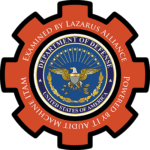
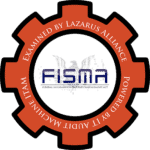
Committee on National Security Systems Instruction No. 1253 (CNSSI 1253), titled Security Categorization and Control Selection for National Security Systems, is a U.S. federal government guideline issued by the Committee on National Security Systems (CNSS). Released in its current version on August 1, 2022, it provides standardized processes for assessing and securing National Security Systems (NSS)—information systems that handle classified information or support critical national security missions, such as those in defense, intelligence, and homeland security agencies. It acts as a companion to NIST Special Publication 800-53 but tailors controls specifically for NSS, incorporating overlays for sensitive environments like classified systems.
Lazarus Alliance, a certified Third-Party Assessment Organization (3PAO), will collaborate directly with your organization to schedule your CNSSI 1253 assessment. Our certified 3PAO assessors will assist in determining the appropriate impact level based on your company’s unique business and government requirements.
Committee on National Security Systems Instruction No. 1253 (CNSSI 1253)
The primary goal is to ensure the confidentiality, integrity, and availability (CIA triad) of NSS by establishing a risk-based framework. It helps federal departments, agencies, and contractors:
- Categorize systems based on potential impact levels.
- Select and implement appropriate security controls.
- Support compliance with broader regulations like the Federal Information Security Modernization Act (FISMA) and Executive Order 14028. Unlike general federal systems (governed by FIPS 199), CNSSI 1253 addresses the unique risks of NSS, such as handling national security information that could cause severe harm if compromised.
Key Components
- Security Categorization: Systems are evaluated separately for Confidentiality (C), Integrity (I), and Availability (A), each rated as Low, Moderate, or High. This results in hybrid baselines like "Moderate-Moderate-High" to reflect nuanced risks. For example, a system might prioritize high confidentiality for classified data but allow lower availability if downtime is tolerable.
- Control Selection: Draws from NIST SP 800-53 baselines, with CNSSI-specific refinements, including explicit CIA associations and overlays (e.g., for Industrial Control Systems or classified environments). Controls cover 20 families, such as Access Control (AC), Audit and Accountability (AU), and Risk Assessment (RA).
- Overlays: Additional specifications for specialized scenarios, like the Classified System Overlay (CNSSI 1253E, Attachment 5), which adds requirements for safeguarding classified data.
The CNSSI 1253 Audit Process
A CNSSI 1253 audit is a structured assessment to verify compliance, often integrated into the Risk Management Framework (RMF). It is typically conducted by accredited Third-Party Assessment Organizations (3PAOs), such as those certified under A2LA ISO/IEC 17020 for impartiality. The process includes:
| Step | Description |
|---|---|
| 1. System Categorization | Determine CIA impact levels using CNSSI 1253 guidelines, producing a FIPS 199-equivalent categorization for NSS. |
| 2. Control Selection & Baseline | Select NIST 800-53 controls tailored to the categorization, applying CNSSI overlays. |
| 3. Documentation Development | Create key artifacts like System Security Plan (SSP), Security Assessment Plan (SAP), Contingency Plan (CP), and Incident Response Plan (IRP). |
| 4. Assessment & Testing | Perform vulnerability scans, penetration testing, and control validations by a 3PAO. |
| 5. Reporting | Generate a Security Assessment Report (SAR) detailing findings, risks, and remediation. |
| 6. Authorization & Monitoring | Obtain an Authority to Operate (ATO) from an authorizing official; implement continuous monitoring for ongoing compliance. |
Audits emphasize proactive, continuous evaluation over periodic checks, reducing risks like scope creep and ensuring alignment with FISMA reporting.
Differences from Related Standards
- Vs. NIST SP 800-53: CNSSI 1253 uses multi-dimensional CIA categorizations (e.g., Moderate-Low-High) instead of a single high-water mark, and it refines overlays for national security contexts.
- Vs. FIPS 199: Applies only to NSS (classified or mission-critical), while FIPS 199 covers general federal systems.
- Integration with other CNSSIs, like CNSSI 1015 for Enterprise Audit Management, enhances audit automation and maturity.
Benefits and Applicability
CNSSI 1253 audits enable organizations to minimize operational risks, achieve accreditation for federal contracts, and automate compliance via tools like GRC platforms. They are essential for contractors entering government markets, with benefits including faster assessments (e.g., up to 46% time reduction) and enhanced situational awareness. For implementation, consult official CNSS documents or accredited providers.
This framework evolves with threats, as seen in recent updates tying into National Security Memorandum 8 for improved cybersecurity posture.

Frequently Asked Questions
What are CNSSI 1253 and FISMA-focused audit services?
These services provide comprehensive audits and assessments aligned with CNSSI 1253 authorization principles and FISMA requirements. They include evaluations of NIST, DIACAP, and DCID 6/3 controls, vulnerability testing, penetration testing, and development of essential documentation like System Security Plans (SSP), Contingency Plans (CP), and Incident Response Plans (IRP) to ensure federal compliance.
Who is eligible for these audit services?
These services are ideal for private and public sector organizations, particularly service providers aiming to enter or expand in government markets. They help minimize operational risks and support accreditation for doing business with federal agencies.
What are the main benefits of using Lazarus Alliance for these audits?
Key benefits include a 46% reduction in traditional assessment time via the ITAM SaaS portal, cost savings through automated tools, 24/7 client access, and a continuous audit approach powered by Cybervisors™. This proactive methodology ensures timely compliance without scope creep or annual price hikes.
How does the audit process work with Lazarus Alliance?
The process begins with scheduling based on your needs, followed by a customized roadmap using Continuum GRC's ITAM platform and Proactive Cyber Security™ methodology. Cybervisors™ guide documentation development, vulnerability assessments, and reporting, with a focus on continuous monitoring rather than end-of-period rushes.
What documentation is included in the CNSSI 1253 compliance package?
The package covers critical documents such as System Security Plan (SSP), Contingency Plan (CP), Incident Response Plan (IRP), Configuration Management Plan (CMP), Privacy Impact Assessment (PIA), FIPS 199 Security Categorization, and policies/procedures for areas like access control, audit accountability, and risk assessment.
What makes Lazarus Alliance’s approach different from other audit providers?
Unlike reactive, end-of-period audits, we use a continuous model with Cybervisors™ for concierge-level support, the top-ranked ITAM SaaS platform for automation, and industry-leading technical rigor. This results in faster, more cost-effective outcomes with no hidden fees or scope expansions.
How can I get started with these audit services?
Contact our team at +1 (888) 896-7580 to speak with a NIST 800-53 Cybervisor™. We'll schedule an initial consultation to assess your needs, provide a tailored roadmap, and grant 24/7 access to the ITAM portal for immediate progress.
Talk with one of our experts
Our Lazarus Alliance Cybervisor™ teams have experience performing thousands of assessments for organizations providing services to clients around the world.
We're here to answer any questions you may have.
How it works: This ensures only verified users can proceed, helping keep responses genuine and spam-free. Thank you for your cooperation! If you don't receive the email, check your spam folder or request a new link. If you prefer to speak with a REAL HUMAN, please call our number listed at the top of this page.To reduce spam submissions, we’ve implemented email verification for access to this form.
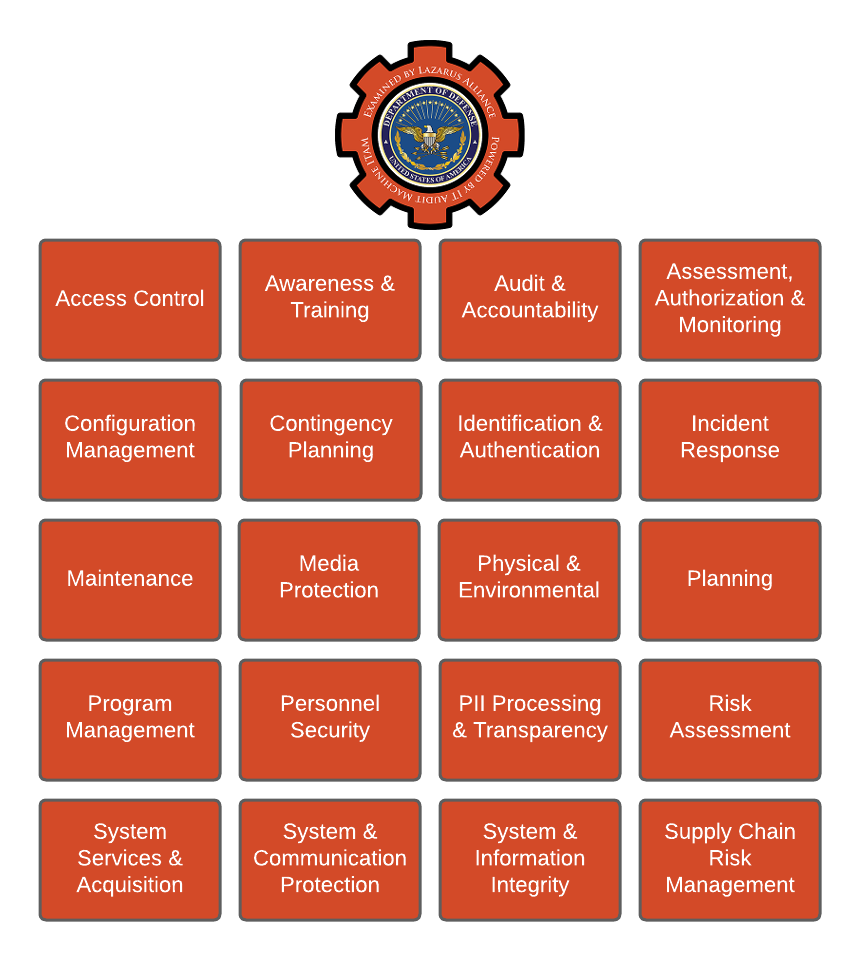
CNSSI 1253 Overview
Lazarus Alliance provides a solid road-map to your CNSSI 1253 assessment requirements with our leading technology powered by Continuum GRC's ITAM SaaS platform, coupled with our Proactive Cyber Security™ service methodology.
A System is holistically comprised of the Technology, People, Processes, and Data used to complete the services provided. The CNSSI 1253 authorization is designed to provide comfort over the following principles described in brief:
- Access Control: This control environment measures the security features of the system boundary that control access rights and resources. Areas to be examined include, but are not limited to: account management, access enforcement, unsuccessful login attempts, system use notification, permitted actions, permitted actions without identification/authorization, remote access, wireless access, access control for mobile devices, use of external information systems, and publicly accessible content.
- Awareness and Training: This control environment measures the security awareness training that the organization has in place, with respect to the system boundary. Areas to be examined include, but are not limited to: security awareness, security training, and security training records.
- Audit and Accountability: This control environment measures the resources in place to measure and hold accountable audit practices over the system boundary. Areas to be examined include, but are not limited to: audit events, content of audit records, audit storage and capacity, response to audit processing failures, audit review process, time stamps, and protection of audit information, audit record retention, and audit generation.
- Assessment Authorization and Monitoring: This control environment examines how organizations assess controls in systems and the environments in which those systems operate as part of initial and ongoing authorizations, continuous monitoring, FISMA annual assessments, system design and development, systems security engineering, privacy engineering, and the system development life cycle.
- Configuration Management: This control environment examines the configurations around the system boundary. Areas to be examined include, but are not limited to: baseline configurations, security impact analysis, configuration settings, least functionality, information system component inventory, software usage restrictions, and user-installed software.
- Contingency Planning: This control environment examines the organization's processes around contingencies. Areas to be examined include, but are not limited to: the contingency plan, contingency training, plan testing, information system backup, and information system recovery and reconstitution.
- Identification and Authentication: This control area examines the procedures and tools in place to identify and authenticate users who are granted access to the system boundary. Areas to be examined include, but are not limited to: identification and authentication, identifier management, authenticator management, authenticator feedback, and cryptographic module authentication.
- Incident Response: This control area examines the process and practices in place for handling and responding to incidents within the system boundary. Areas to be examined include, but are not limited to: incident response training, handling, monitoring, reporting, response assistance, and the incident response plan.
- Maintenance: This control area examines the processes and procedures in place that support controlled maintenance within the system boundary. Areas to be examined include, but are not limited to: controlled maintenance, nonlocal maintenance, and maintenance personnel.
- Media Protection: This control area examines the processes and procedures in place that support proper protection of system media assets. Areas to be examined include, but are not limited to: media access, sanitization, and disposal.
- Physical and Environmental: This control area examines the process and procedures in place, which support proper physical and environmental protections to the system boundary. Areas to be examined include, but are not limited to, physical access control and authorizations, monitoring physical access, visitor access records, emergency lighting, fire protection, temperature and humidity controls, water damage protection, and delivery and removal.
- Planning: This control area examines the processes in place around proper planning for the system boundary. Areas to be examined include, but are not limited to: The System Security Plan and rules of behavior.
- Program Management: This control environment measures the organization’s status in the development and implementation of an organization-wide information security program to address information security for the information and information systems that support the operations and assets of the organization, including those provided or managed by another organization, contractor, or other source.
- Personnel Security: This control environment measures the practices and processes in place that examine, screen, and review personnel assigned to the system boundary. Areas to be examined include, but are not limited to: position risk designation; personnel screening, termination, and transfer; access agreements, third-party personnel, and personnel sanctions.
- Personally Identifiable Information Processing and Transparency: This control environment measures the Personally Identifiable Information; Any representation of information that permits the identity of an individual to whom the information applies to be reasonably inferred by either direct or indirect means.
- Risk Assessment: This control area examines the process and procedures in place, which measure risk and vulnerabilities to the system boundary. Areas to be examined include, but are not limited to: security categorization, risk assessment, and vulnerability scanning.
- System Services and Acquisition: This control environment measures the practices and processes in place for the development of the system boundary. Areas to be examined include, but are not limited to: the allocation of resources, the system development life cycle, the acquisition process, information system documentation, and external information system services.
- System and Communication Protection: This control area examines the process and procedures in place, which measure the protection in place for the system boundary. Areas to be examined include, but are not limited to denial of service protection, boundary protection, cryptographic key establishment, protection and management, collaborative computing devices, secure name/address resolution devices, provisioning architecture, and process isolation.
- System and Information Integrity: This control environment measures the practices and processes in place for the assurance of system boundary integrity. Areas to be examined include, but are not limited to: flaw remediation, malicious code protection, information system monitoring, and information handling and retention.
- Supply Chain Risk Management: This control environment measures the practices and processes in place for identifying, assessing, and mitigating ICT supply chain risks at all levels of their organizations.
Lazarus Alliance CNSSI 1253 client services will schedule our team to prioritize this engagement based on the needs of our clients and ensure the timely delivery of the required compliance package, subject to client resources being available.
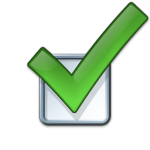
Key Benefits of CNSSI 1253 Compliance
Achieving and maintaining CNSSI 1253 compliance delivers significant strategic, operational, and financial advantages—especially for organizations that handle National Security Systems (NSS) or pursue contracts with DoD, Intelligence Community, or other national security agencies.
| # | Benefit | Explanation |
|---|---|---|
| 1 | Eligibility for National Security Contracts | CNSSI 1253 is mandatory for any system processing classified information or supporting critical national security missions. Compliance is a prerequisite to receive an Authority to Operate (ATO) and win or retain DoD/IC contracts. |
| 2 | Precise, Risk-Based Security Posture | Unlike FISMA’s high-water-mark approach, CNSSI 1253 uses separate C-I-A impact levels (e.g., High-Moderate-Moderate). This prevents over-control of low-impact areas and ensures resources are focused where damage potential is greatest. |
| 3 | Streamlined Authorization under RMF | Proper CNSSI 1253 categorization and control selection directly feed steps 1 and 2 of the NIST RMF, dramatically reducing rework and accelerating the path to ATO. |
| 4 | Stronger Protection of Classified & CUI | Overlays such as the Classified Information Overlay and Space Platform Overlay add rigorous safeguards (e.g., TEMPEST, COMSEC, cross-domain solutions) that exceed standard NIST 800-53 baselines. |
| 5 | Improved Interoperability & Reciprocity | Many agencies and combatant commands recognize CNSSI 1253-compliant packages, enabling faster reciprocity and reducing duplicate assessments when working across DoD/IC boundaries. |
| 6 | Cost & Time Savings with Continuous Monitoring | When paired with modern GRC platforms (e.g., Continuum GRC ITAM), organizations report up to 46% reduction in assessment time and avoidance of year-end audit “crunches” through continuous evidence collection. |
| 7 | Enhanced Cyber Resilience | Mandatory continuous monitoring, POA&M management, and incident response planning result in earlier detection and faster remediation of vulnerabilities. |
| 8 | Competitive Advantage in the Federal Market | Demonstrated CNSSI 1253 compliance signals maturity to prime contractors and agency acquisition officials, giving compliant organizations a clear edge in source selections and re-competes. |
| 9 | Alignment with Broader Federal Initiatives | Satisfies requirements in Executive Order 14028, National Security Memorandum 10 (NSM-10), CISA Binding Operational Directives, and Zero Trust Architecture mandates. |
| 10 | Reduced Legal & Reputational Risk | Non-compliance with NSS requirements can trigger loss of clearance sponsorship, contract termination, or civil/false-claims liability. Full compliance mitigates these risks. |
In Summary
CNSSI 1253 compliance is not just a checkbox—it is a strategic enabler that opens the door to high-value national security work while delivering a more efficient, tailored, and resilient security program than standard FISMA/NIST approaches alone. Organizations that invest in it position themselves as trusted partners to the U.S. national security enterprise.
Credentials You Can Count On
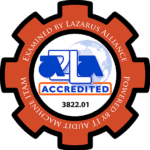
American Association for Laboratory Accreditation (A2LA) ISO/IEC 17020 accredited certification number 3822.01.
Lazarus Alliance utilizes the Continuum GRC IT Audit Machine, Security Trifecta methodology, and Policy Machine to deliver internationally recognized “Best Practices” for establishing organizational security standards and controls. These support compliance with NIST 800-53-based audit certifications and assessments.
